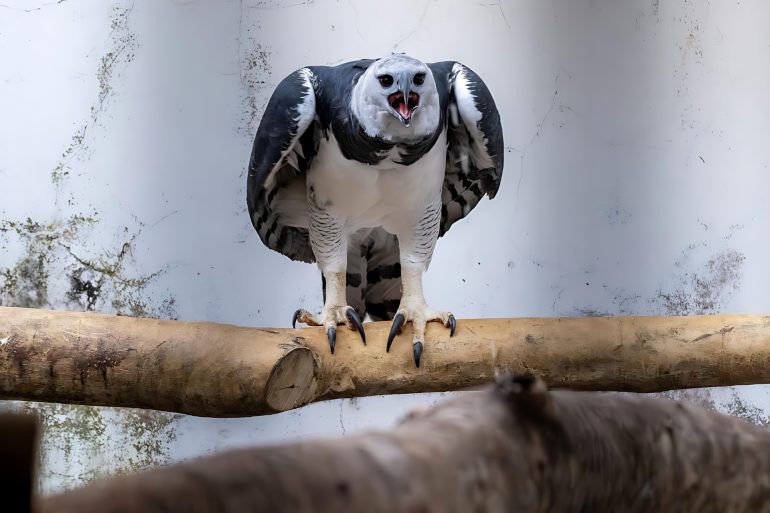The Tekotopa Environmental Centre of Itaipú received two magnificent specimens of harpy eagles (known as taguato ruvicha in Guarani language) in Hernandarias, Paraguay, marking a significant step in national wildlife conservation efforts. These birds were transferred from the Bela Vista Biological Refuge on the Brazilian side of the Itaipú complex to Paraguay, under a carefully coordinated binational programme.
Harpy eagles: Arrival and public exhibition
Upon arrival at Tekotopa, a female aged six years and a male aged five were placed in specially designed quarantine enclosures under the supervision of veterinarians and technicians from the Wildlife Research Centre (CIASI) at Itaipú. Prior to relocation, they underwent health evaluations in Brazil to confirm their fitness for transfer.
These two harpy eagles will soon be part of the Sendero del Jaguareté, a recently inaugurated wildlife exhibition path within the Tekotopa grounds, aimed at educating visitors about native fauna and conservation.
Conservation significance and symbolism
Remarkably, there have been no confirmed records of taguato ruvicha in Paraguay’s wild habitats since around the year 2000, making this reintroduction a symbolic restoration of the species’ presence in the country. As top predators and among the largest eagles in the hemisphere, harpy eagles play an important ecological role.
According to Santiago Molina, coordinator at CIASI, these birds are intended to form a “safety population” to complement those kept under care on the Brazilian side, essentially acting as ambassadors and genetic reservoirs to strengthen conservation across both margins.
Challenges and future prospects
Transferring such large and sensitive birds required extensive paperwork and coordination with multiple environmental agencies in both Paraguay and Brazil. The process took nearly a year to complete. The journey itself was done via land, across the Friendship Bridge, rather than through the hydroelectric plant zone.
Moving forward, the success of this reintroduction will depend on continuous veterinary care, monitoring, habitat planning, and public outreach. Tekotopa aims to become a centre of excellence in regional biodiversity conservation.
Moreover, this project strengthens Itaipú’s role not only as a producer of energy but also as a steward of nature in the border region. As Tekotopa develops its exhibition and research capacities, it may attract more interest from international conservation networks, strengthen environmental awareness locally, and contribute to ecotourism growth in the area.
This growing attention to Paraguay’s fauna is echoed in the reverence for the Pájaro Campana, Paraguay’s national bird. Its legendary call, its cultural resonance, and its status as a symbol of both natural beauty and environmental fragility all serve as reminders that efforts like those at Tekotopa are part of a broader national impulse to protect and celebrate what makes Paraguayan biodiversity so special.


